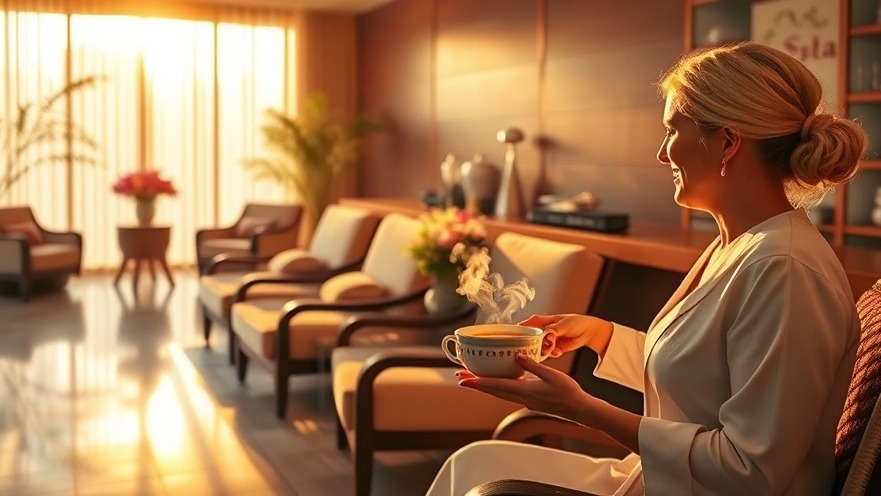
When Luxury Feels Personal, Not Pricey
Picture a guest walking into your spa. The music hums softly, the air carries a calming lavender note, and a therapist greets them by name while offering warm tea. In that moment, the guest feels something money can’t buy — genuine care.
For years, luxury in hospitality meant marble floors, sprawling relaxation lounges, and treatment menus with dizzying price tags.
But that definition has changed. Today, true luxury is not what guests see — it’s what they feel.
Ritz-Carlton cofounder Horst Schulze has often said that people want to be treated with respect and dignity, and that simple truth has quietly redefined what luxury means for spas and wellness centers.
For owners, directors, and therapists, this isn’t abstract philosophy. It’s strategy. Guests may forgive a missing feature or a dated fixture, but they will never forget how a staff member made them feel invisible — or extraordinary.
The Quiet Revolution: From Décor to Human Connection
The spa industry didn’t shift overnight. In the early days, luxury was measured by the size of your pool, the plushness of your robes, or the imported fixtures in your treatment rooms.
Yet over time, leaders began to notice that guests weren’t talking about the chandeliers. They were talking about the people.
Isadore Sharp, founder of Four Seasons, was one of the first to pivot. He built his empire on the “Golden Rule”: treat others as you wish to be treated. Guests remembered kindness, not décor.
This cultural shift was validated by data. Forbes Travel Guide, which sends inspectors to test up to nine hundred criteria, eventually adjusted its rating system so that service counted for the majority of the score.
Today, around seventy percent of a property’s rating depends on the way staff behave, not just the physical setting. For spa leaders, the lesson is clear: the chandelier doesn’t define you — the care your team gives does.

The Moments That Changed the Industry
Every field has its turning points, and luxury wellness is no different. One of the most famous is the Ritz-Carlton’s empowerment policy.
Every employee is trusted to spend up to $2,000 to resolve a guest issue or create a memorable moment. While rarely used in full, the policy sends a loud message: staff are trusted, and guests matter.
Standards shifted elsewhere, too. Service audits from Forbes and similar organizations began to focus on warmth, anticipation, and recovery when things went wrong.
Around the same time, technology joined the team. Programs like Hilton’s SALT surveys and platforms such as Medallia or Qualtrics allowed managers to gather real-time feedback and act before a guest left unhappy.
Meanwhile, design began borrowing from wellness science. Circadian lighting systems, such as those piloted by IHG and built into Swissôtel’s Vitality Rooms, showed that light could support sleep and recovery.
Studies on acoustics revealed that noise control mattered as much as décor in shaping guest comfort. Biophilic design — plants, daylight, natural textures — entered spas not just as decoration but as therapy.
Together, these changes marked a turning point: luxury was no longer just a look. It was a feeling.
The Hidden Language of Luxury
When guests describe a luxury spa experience, they don’t always mention the treatment menu. More often, they speak of the atmosphere — the feeling that every sense has been gently cared for.
Silence, for example, is powerful. A perfectly executed massage can be undone by the hum of an HVAC system or voices in the hallway.
Spas that invest in acoustic comfort show their clients, without words, that their peace is a priority. Light tells its own story, too.
Tuned, human-centric lighting that mirrors natural rhythms can make guests feel calm and rested, even if they can’t explain why.
Scent is another unsung language of care. A subtle aroma in the lobby can instantly lower stress and become part of the spa’s identity.
And then there are the gestures — small, nearly invisible actions that leave lasting impressions. A therapist who adjusts a blanket without being asked, or a receptionist who remembers a guest’s favorite tea, creates the kind of memory that money can’t buy.

Finding Your Edge in a Crowded Market
In today’s wellness world, competition is fierce. What makes one spa stand out from another isn’t always grandeur — it’s authenticity.
Personalization has become the most powerful differentiator. Imagine a returning client greeted with, “Welcome back, Anna. Would you like the same jasmine tea as last time?” That moment alone can secure loyalty.
Flashy interiors might earn likes on Instagram, but consistent comfort keeps guests coming back. Quiet luxury — restrained, intentional, and genuine — is proving stronger than spectacle.
And for spas willing to embrace wellness science, there’s an opportunity to tell a richer brand story.
Explaining that your treatment rooms are designed with circadian lighting or that your relaxation lounge was built with acoustic comfort in mind gives your guests confidence that their well-being is your first priority.
Some spas are even training their staff to act more like wellness concierges, guiding clients through entire wellness journeys rather than just booking treatments. This shift not only adds value but also builds a reputation for expertise and care.
Practical Moves That Redefine Luxury in Your Spa
So how can you bring this philosophy into your own business? It starts with perspective. Walk through your spa like a first-time guest.
Sit in the lounge, lie on a treatment table, and take in the sights, sounds, and scents. Does the experience feel intentional? Where does it break? Often, the smallest tweaks make the biggest difference.
Empowerment is another game-changer. You don’t need a $2,000 policy like Ritz-Carlton, but even a modest discretionary allowance for staff — $25 or $50 to solve a problem or delight a guest — communicates trust and care.
Pair this with training in anticipation skills. Encourage staff to read body language: a guest rubbing her shoulders in the waiting room might appreciate a warm wrap while she waits.
Feedback should be a daily ritual, not an afterthought. A short two-question survey after each visit, combined with a quick review of comments at team meetings, can highlight strengths and expose gaps before they become problems. Celebrate wins with your team and make improvements visible to your clients.
Finally, design your sensory environment as carefully as your treatment menu. Document your target lighting levels, music volume, scent profile, and temperature, and review them regularly. These details aren’t decoration — they’re part of the therapy.

Conclusion: Luxury Is What’s Felt, Not Seen
The spa of tomorrow will not be defined by its square footage or the gloss of its brochures. It will be defined by memory — the stories guests carry with them when they leave.
Four Seasons built its reputation on the Golden Rule, and Forbes Travel Guide weights its ratings toward service for the same reason: the human element is what endures.
For today’s spa leaders, the lesson is simple. Luxury is no longer about surface beauty; it’s about the depth of human care. Every scent, every sound, every interaction is a chance to tell your guests, “You matter.”
Spas that embrace this new definition of luxury will not only survive but thrive. Because in the end, luxury isn’t what’s seen. It’s what’s felt.
Explore deeper analysis on spa business trends, treatment evolution, and market shifts in the Industry Trends category, or visit Spa Front News for more industry intelligence and wellness inspiration.
—
Authored by the Spa Front News Editorial Team — a publication of DSA Digital Media, dedicated to elevating the spa industry with expert insights, treatment breakthroughs, and destination features for spa owners, managers, and wellness leaders.
 Add Row
Add Row  Add
Add 




Write A Comment